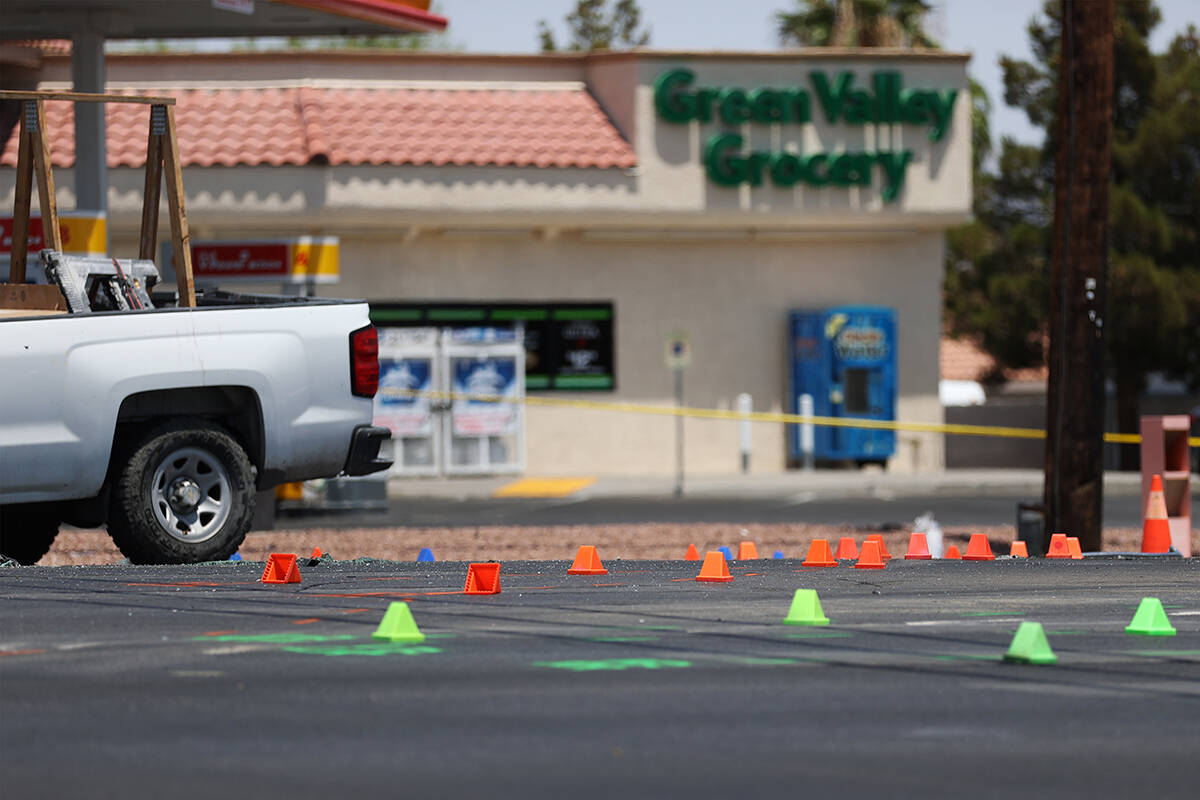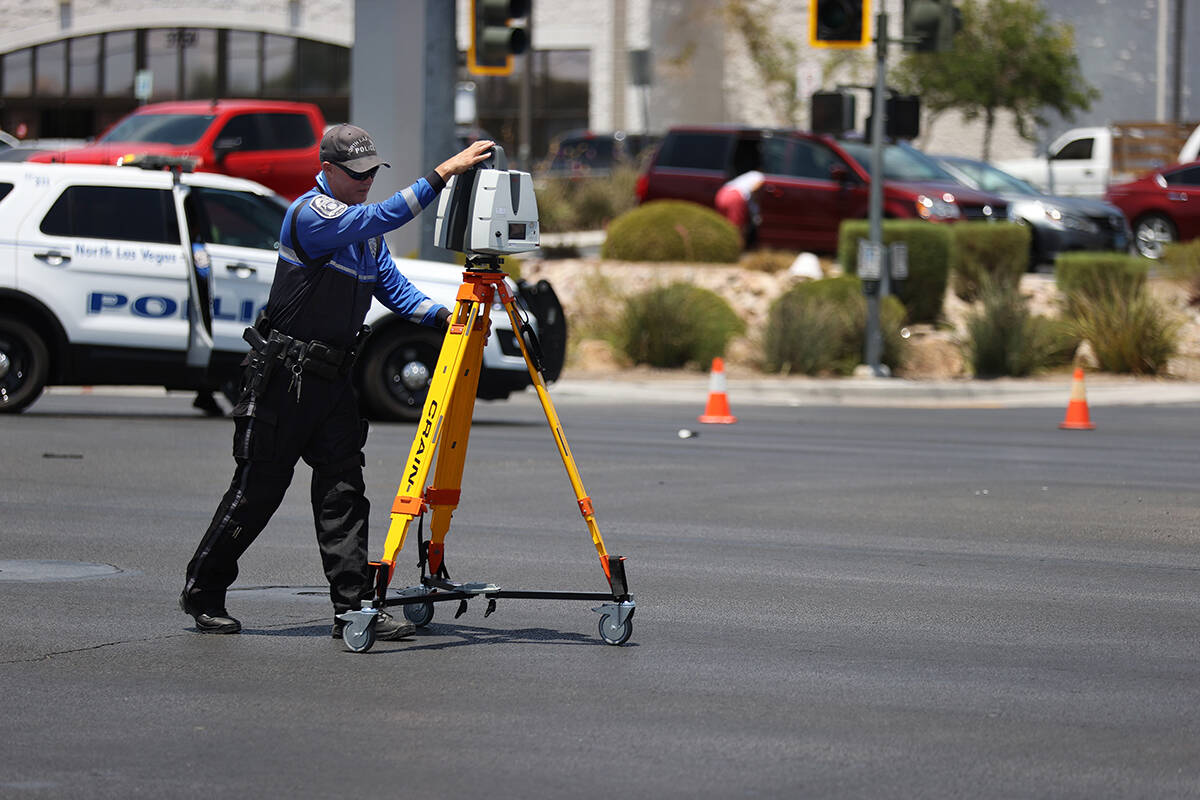How do police determine how fast a car was going at the time of a crash?
Have you ever wondered how police are able to determine how fast a car was going at the time of a crash? It’s a mix of technology and mathematical formulas, according to the North Las Vegas Police Department.
Spokesman Alexander Cuevas explained that all cars are equipped with an event data recorder, commonly known as a black box, that records the vehicle’s activity leading up to a collision. Airplanes have similar systems.
Jennifer Gabris with the National Transportation Safety Board explained that while black boxes are not technically required in all cars, “virtually any” vehicle that is equipped with airbags will have one.
Black boxes fall under a federal regulation that was established on Aug. 28, 2006, Gabris said, which “requires that light vehicles equipped with (event data recorders) meet certain requirements for data elements, data capture and format, data retrieval, and data crash survivability.”
After a crash, the black box is removed – very carefully, Cuevas said, because the equipment is incredibly sensitive – and the data can be downloaded to provide police with a report of the vehicle’s speed and acceleration or deceleration in the moments leading up to the crash.
For example, police said that the device pulled from the Dodge Challenger that sped through a red light and caused a crash that left nine people dead on Jan. 29 showed that the car was traveling in excess of 100 mph. Cuevas added that there were no skid marks found at the scene to indicate that the driver had attempted to slow down.
In addition to the black box, Cuevas explained that the department has collision investigators who go through extensive training to learn mathematical formulas that allow them to utilize evidence at the scene to determine a vehicle’s speed at the time of impact.
The investigators are able to determine speed by looking at skid marks, debris and vehicle damage at the scene of the crash and taking into account the weight of the vehicles and how far they were moved during the crash, Cuevas said.
The Henderson Police Department added that its traffic unit investigators “attend multiple traffic accident reconstruction courses focused on mathematical concepts, standards in measurement, dynamics, vectors, time-distance relationships, friction, momentum, and airborne/rollover analysis” so they are equipped to assess a variety of factors at a crash scene.
The Metropolitan Police Department declined to comment on how it investigates factors like speed after traffic collisions.
Contact Alexis Ford at aford@reviewjournal.com or follow @alexisdford on Twitter.

























